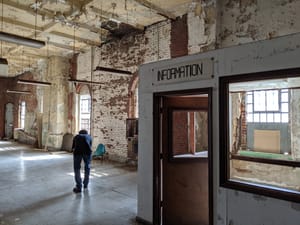Andy Walsh of the University of Huddersfield gave a very nice presentation on QR Codes at the recent EMTACL10 conference at NTNU in Trondheim.
I particularly liked his introduction in which he provided some motivating context for his work. He noted that as library spaces became places for social activity, their specifically informational dimension was waning. And that this was a pity, and in the long term probably not very helpful for the library. He suggested that QR codes (and RFID tags) were one way of reconnecting those places to an informational dimension, and gave examples of how codes and tags could be used to link library places to information resources and services.
An earlier presentation on Slideshare gives a sense of some of the topics discussed.

Prompted by Andy’s presentation, I had a quick look at some QR Code resources for libraries earlier:
- I wrote about QR Codes in the University of Bath catalogue a while ago. The University of Huddersfield catalogue, Kyoto University, and San Diego State University also use them in this way.
- The Library success: a best practices wiki has a page on QR Codes and libraries.
- The University of Bath, noted above, has a special interest in QR Codes and Andy Ramsden maintains a resource about the use of QR codes in education. There is also a QR code FAQ.
- There is a guide to use of QR codes in libraries and education at Providence College (maintained by Chris Landry). (Via @lisacarlucci)



